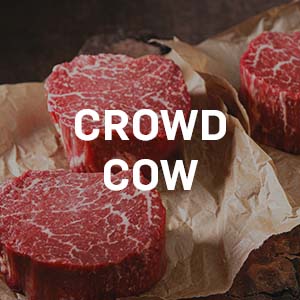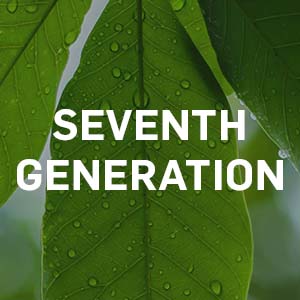Case Study: Patagonia
While some companies incorporate sustainability practically into sourcing and shipping and others focus on the empirical side of things through product ingredients and consumer honesty, there is a third segment whose very brand essence relies on their inherent relationship to ethical consumerism and their perceived identity in the marketplace. Standing atop the summit of this sustainability incorporation style is Patagonia.
Known for their outdoor magazine-turned-catalog approach to direct marketing, Patagonia remains a bastion of trendy, up-scale clothing that can go from the trail to the corner office and everywhere in-between. While most consumers are more likely to see the famous Patagonia Mountain range logo on college campuses rather than steep cliff sides, the brand has remained committed to a campaign built around outdoor adventure and care for the natural world. For a brand whose very essence is so deeply entwined with the notion of sustainability, it is absolutely imperative that they remain authentically engaged with environmental protection and conservation.
In their Spring 2021 catalog, Patagonia comes out swinging with their heart on their sleeve and I love them for it. Featured on the 2-3 spread is an inspired illustration of hope and destruction, a world of new life and coal plants. On the right is the message below:
When describing the year 2021 and the time that follows as “A world plagued with death – deaths that lie at the feet of elected officials who ignored and denied the many crises we faced, and who took every penny the fossil fuel industry gave them.” Patagonia makes it clear where they stand and what they think. The letter continues all the way to page seven, juxtaposing the environmental devastation humans are bringing to the planet and the pockets of impassioned hope envisioned by the author. It’s bleak. It’s hopeful. It’s ruinous. It’s moving.
To spend the first seven pages of your clothing catalog on a piece of fictional (kinda) writing that unflinchingly paints a portrait of the state of the environment, political landscape, and what a positive future could look like isn’t just bold, it also adds a level of depth and authenticity to every message that will follow. It pulls a blind off the reader, increasing the verisimilitude of the catalog experience while bringing them into the fold. From the beginning, the stage is tonally set and now just needs the empirical follow through.
After an opening article dwelling on the practical and existential aspects of climbing mountains in Pakistan, readers are met with an article/internal reflection wonderfully titled “We Really Do Want You to Buy Less: We’re trying to make less, too”.
Without the context of the opening prose piece this title might come across as trite or seem like it was trying too hard, but given what’s come before it has immense stopping power that instantly grabs a reader’s attention. If you were to skip the beginning of the actual article (which you shouldn’t because there are some great lines in there i.e. “What we are doing is urging everyone to keep in mind that everything we make, everything anyone makes, has an impact on the planet”) you would still be met with a terrific visual below the copy blocks.
In a series of 6 expertly crafted icons and brief descriptions the chart manages to walk consumers through some of the specifics of Patagonia’s sustainability efforts, such as the fact that “64% of [their] fabrics this season are made with recycled materials” or that “Last year [they] repaired over 56,000 garments”. It’s an opening spread that is reiterated in tenor and detail time and time again through following articles on the neoprene used in their wet suits, or their extensive garment repair industry that has only gotten bigger and better in the last 50 years. While we won’t cover each piece contained in these pages, I can assure you that every article, illustration, or advertisement in the catalog serves to further the brand’s mission and reputation as dedicated to producing attractive, durable, and sustainable clothing and gear for any and all adventures.
While not part of their catalog, I want to quickly mention two other aspects of Patagonia’s devotion to sustainability. The first of these is their “1% For The Planet” initiative, which has pledged 1% of sales to the preservation and restoration of the natural environment since 1985, resulting in over $140 million dollars in cash and in-kind donations. Secondly, during the 2021 Black Friday sale Patagonia had a record-breaking $10 million in sales. In light of this immense success, they decided to initiate a “100 Percent Today, 1 Percent Every Day” campaign and donate the entirety of their Black Friday profits to environmental organizations through a series of grants. It’s actions like this that keep that essential core of authentic sustainability intact, pushing them on to even greater successes as a brand truly passionate about taking care of the world we share. From products to profits, Patagonia is an unparalleled example of sustainability in action.
If you want to learn more about adding essential sustainability messaging to your brand or how to improve your own catalog, reach out to Devon at devonc@jschmid.com.
More case studies in our sustainability series:

From sourcing food to shipping it across the country, delivery food services have a steep hill to climb in order to reach sustainability. Take a look at Crowd Cow to see how this goal can be reached from farm to table.
Read the full case study here.

From the name to the design, you know Seventh Generation takes sustainability seriously. Step behind the scenes to learn how they incorporate transparency and empirical detail in every aspect of their business.
Read full case study here.
Thanks to Unsplash for all photos; Crowd Cow Photo by Madie Hamilton; Seventh Generation Photo by Vengadesh Sago; Patagonia Photo by Ivana Cajina.
Tags: Crowd Cow, Customer Experience, marketing, Patagonia, Seventh Generation, Strategy, Sustainability


